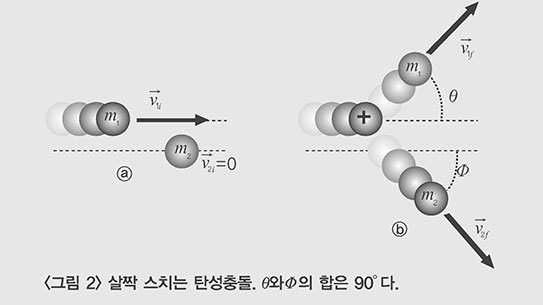캘리포니아주의 라졸라에 위치한 스크립스 해양연구소의 레이 위스박사가 이끄는 미·소 공동 연구팀은 시베리아 동부에 있는 바이칼 호수와 관련된 중요한 발견을 했다.
바이칼 호수가 세계에서 가장 큰 호수는 아니다. 그 최고의 영예는 31,500 평방마일이나 되는 슈페리어 호수에 주어지며 바이칼 호수는 11,780 평방마일일 뿐이다. 그러나 슈페리어 호수의 최고 수심이 1,333 피트임에 비해 바이칼호수는 1마일 이상 깊은 5,713 피트의 깊이가 된다.
바이칼 호수는 바닷고기가 있는 유일한 호수다. 그 깊이 때문에 바이칼호수는 지구위 전체 담수 공급량의 5분의 1을 담고있다. 사실 이 양은 미국 5대호(湖) 물 전체의 두배나 된다.
그렇다면 과연 어떻게 바이칼 호수가 움직이는가를 알아보는 일은 매우 중요하다. 예를 들어 호수의 가장 깊은 층이 충분한 산소를 공급받아 생명체를 유지할 수 있도록 어떻게 물의 순환이 이루어지고 있을까?
1988년에 이러한 바이칼 호수의 신비를 밝히기 위하여 위스박사는 냉장기구나 스프레이에 흔히 사용되고 있으며 최근들어 오존층을 파괴하는 원인으로 인식된 프레온가스를 이용했다. 프레온가스는 매우 안정된 물질이고 변하지 않기 때문에 표지로 활용할 수 있다. 바이칼 호수의 물에 프레온가스를 타 넣은 뒤 호수 이곳저곳에서 그 가스의 유무를 측정함으로써 호숫물이 어떻게 순환되고 있는가를 알 수 있는 것이다.
위스박사는 바이칼 호수 깊은 곳의 물 중 12.5%가 매년 새 물로 갱신되며 이를 통해 약 8년에 한번씩 제일 깊은 곳의 물까지도 신선한 산소의 공급을 받고 있음을 발견했다.
바이칼 호수에서의 보다 중요한 발견은 1990년도 중반에 헌터대학 지질·지리학과의 캐더린 크레인씨의 연구팀에 의해 이루어졌다.
최근 바다속엔 뜨거운 지점인 ‘핫 스폿’ 혹은 ‘열수출구(熱水出口)’라는 지점들이 있다는 사실이 알려졌다. 그러한 지점에서 깊은 곳으로부터 위로 치솟은 물질이 있고 그러한 물질위에서 생명체들이 번창하게 된다.
그런데 이제 그런 열수출구들이 바이칼 호수 북동쪽 끝 부분의 바닥에도 있음이 밝혀졌다.
열수출구들 근처에서 찍은 사진들은 호수 밑바닥의 매트모양의 흰 물질안에서 박테리아형 생물들이 길고 두꺼운 하얀 띠의 형태로 거의 연속적인 층을 이루고 있음을 보여주고 있다.
이와같은 핫 스풋들은 말 그대로 정말 뜨겁다. 호숫물은 섭씨 약 3.5도인데 박테리아 매트 밑의 물질은 섭씨 16도나 된다.
열수출구들 근처의 생물들로 박테리아만 있는 것은 아니다. 해면동물도 있고 복족류(腹足類, 소라나 달팽이 등)나 단각류(短脚類, 잎새우나 바다벼룩 등)의 생물들도 있다. 그러나 이들은 핫 스폿 지역이 아닌 호수밑의 다른 지역에선 발견되지 않는다.
바이칼 호수에서 사는 동물들은 바다속 동물들과 어느 면에서 유사한점이 있는 것으로 보여 어쩌면 이 호수가 예전엔 바다와 연결된 적이 있었던 것이 아닌가 추측케 한다. 그러나 또 한편 바이칼 호수는 점점 넓어지고 있으며 언젠가 등장할 새로운 바다의 시초인지도 모를 일이다. 앞으로 어떻게 될지는 모를 일이다.
그런데 정확히 호수밑 어디에 핫 스풋들이 나타나는지에 대해선 약간의 의문이 있다. 바다에선 바다면적이 넓어지고 용암이 솟구치는 곳에 핫 스폿들이 나타난다. 그러나 바이칼 호수의 경우엔 그렇지 않은 것이다.
바이칼 호수의 열수출구들은 호수밑 계곡의 축으로부터 11마일이상 떨어진 단층을 따라 발견된다. 이는 마그마 혹은 용암이 있거나 위로 분출된 곳에 따른 것이리라 추정된다. 어쩌면 바이칼 호수엔 이같은 용암이 상대적으로 매우 적고 따라서 핫 스폿들을 설명하기엔 충분치 않을는지 모른다.
한편 바이칼 호수는 격리된 생물 군집으로서 거기엔 그 호수 특유의 많은 식물과 동물체들이 있다. 1,200개가 넘는 종(種)이 호수속 각기 다른 층에서 서식하고 있으며 그 중 약 4분의 3은 지구상 어디에서도 발견되지 않는 것들이다.
바이칼 호수 물고기중 가장 큰 것은 철갑상어인데 어떤 것은 길이가 71인치에 무게가 2백65파운드나 나가는 것도 있다. 바이칼 호수의 유일한 포유동물은 바이칼 물개다.
소련정부는 바이칼 호수의 오염을 예방하기 위해 열심히 노력하고 있다.
사실 바이칼 호수는 매우 독특한 지역이고 지구상에서 그와 같은 곳은 없다. 따라서 이 호수를 원래 모습대로 보전하고 그 안의 식물체와 동물체들을 보호하는 일은 매우 중요하다. 호숫가를 따라 산업체들이 있긴 하지만 1971년 이래 소련은 그러한 산업체들을 엄격히 통제하고 있다.
소련 과학자들은 바이칼 호수에 특별한 관심을 가지고 있으며 오염을 야기시킬 그 어떠한 상황에도 지속적으로 반대하고 있다.
An American-Soviet team led by Ray F. Weiss, Ph.D., of the Scripps Institution of Oceanography at La Jolla, Calif., has made an important discovery involving Lake Baikal in eastern Siberia.
Lake Baikal is not the largest lake in the world. That honor belongs to Lake Superior, which is 31,500 square miles in area, whereas Lake Baikal has an area of 11,780 square miles. However, Lake Superior's greatest depth is 1,333 feet, whereas lake Baikal has a depth of 5,713 feet, better than a mile.
Lake baikal is the only lake that has deep-sea fish in it. Because of its depth, Lake Baikal contains one-fifth of the entire supply of Earth's fresh water. In fact, it has twice as much fresh water as all five of the Great Lakes put together.
It is important, then, to find out just how Lake Baikal works. For instance, how does it manage to circulate its water so that the deepest layers possess plenty of oxygen and can support life?
In 1988, to help him uncover the lake's mystery, Weiss used the gas Freon, which is usually used in refrigeration devices, in aerosols-and which has now been recognized as a gas that is destroying Earth's ozone layer. Because Freon is very stable and undergoes no changes, it can be used as a marker. It can be added to the water of Lake Baikal and its presence here and there in the water will tell us how it circulates.
Weiss discovered that 12.5 percent of the deep water in Lake Baikal is renewed each year, so that every eight years or so, the water in the lake's depths has a fresh supply of oxygen.
An even more important discovery was made in Lake Baikal in the mid-1990 by a team led by Kathleen Crane of Hunter College's Department of Geology and Geography.
In recent years, it has been discovered that the oceans have places where there are "hot spots" or "hydrothermal vents." In such places, there are materials that arise from the depths, and on such materials, there are forms of life that flourish.
Now it has been discovered that such hydrothermal vents are also to be found at the bottom of Lake Baikal, in the northeast corner.
Photographs have been taken of the areas near the vents and they sow that there is a nearly continuous layer of bacterial life there, consisting of long, thick white strands inside a matrix of whitish material.
These hot spots are hot all right. Whereas the water has a temperature of about 3.5 degrees C, the material under the bacterial mat has a temperature of 16 degrees C.
Nor is the life that exists near the vents purely bacterial in nature. There are white sponges, and other animals called gastropods and amphipods.
They are not found in parts of the lake bottom that are removed from the hot spot.
The animals found in Lake Baikal seem to have certain resemblances to forms found in saltwater, so it may be that the lake may once have been connected to the oceans. On the other hand, it may be that Lake Baikal is spreading and that it is the nucleus of a new ocean that may appear some day. We don't really know.
It's a little puzzling as to exactly where the hot spots at the bottom of Lake Baikal appear. In the oceans, hot spots appear where the sea floor is spreading, where melted rock is coming up from the depths. This is not so in the case of Lake Baikal.
The hydrothermal vents in Baikal are found along a fault that is more than 11 miles from the axis of the rift valley floor. It is suspected that this depends on places where magma, or melted rock, may exist and may be extruded upward. It may be that Lake baikal has comparatively little of this magma and hence not much in the way of hot spots.
Lake Baikal, by the way, is an isolated life-community and has a large number of plants and animals that are peculiar to it. There are over 1,200 different species that live at different levels in the water and, of these, some three-fourths are not found anywhere else.
The largest of the Lake Baikal fish are sturgeons, some of which measure 71 inches and weigh as much as 265 pounds. Only one mammal inhabits Lake Baikal-the Baikal seal.
The Soviet government is heavily engaged in preventing the pollution of Lake Baikal.
After all, Lake Baikal is a unique place, and there is no place like it anywhere else on Earth. It is important to keep it as pristine as possible, and to protect the plants and animals that belong to it. There are industries along its shores but, since 1971, the Soviet Union has kept those industries under strict control.
Soviet scientists are particularly interested in Lake Baikal and they are constantly objecting to any events that may result in pollution.
(C) 1991, Los Angeles Times Syndicate
이 기사의 내용이 궁금하신가요?
기사 전문을 보시려면500(500원)이 필요합니다.
1991년 07월 과학동아 정보
🎓️ 진로 추천
- 해양학
- 생명과학·생명공학
- 환경학·환경공학

















